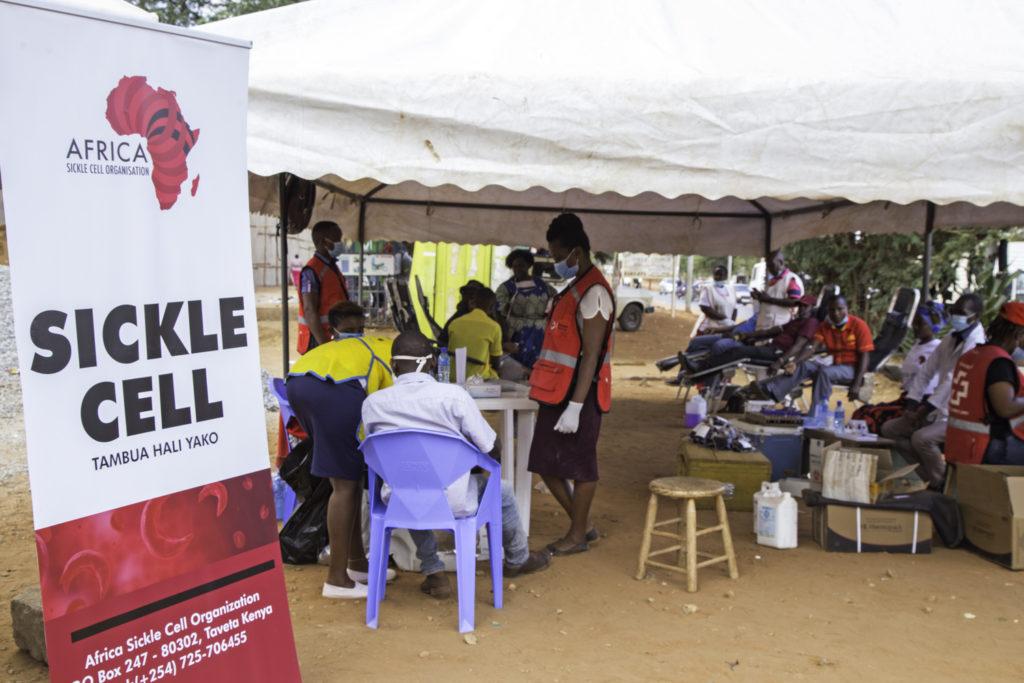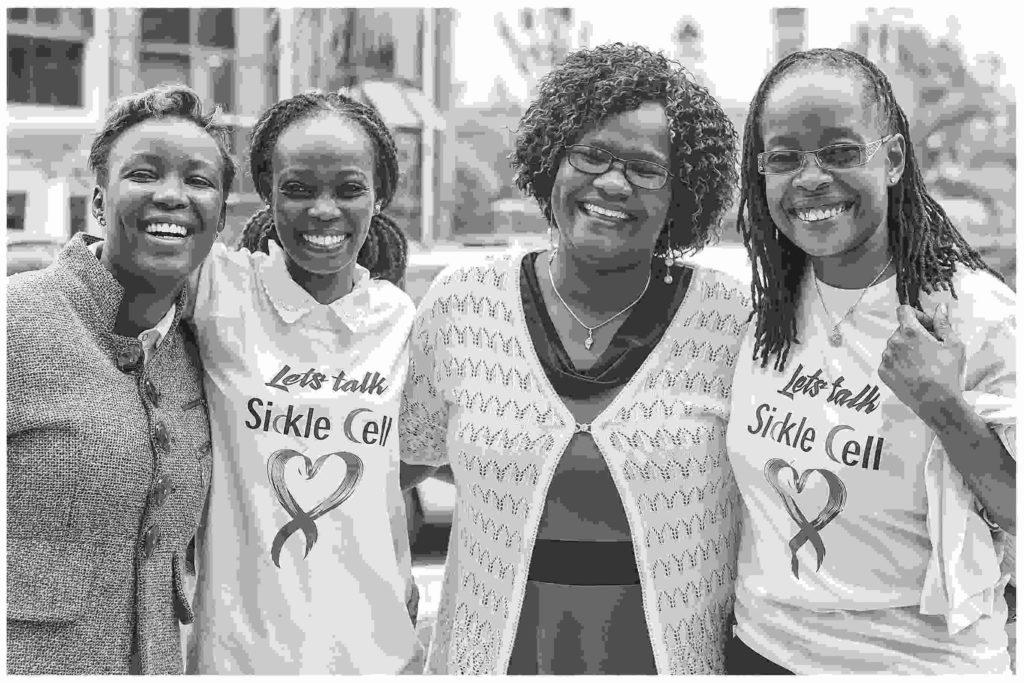
World Sickle Cell Day is commemorated on the 19th of June – an important day to raise awareness on Sickle Cell Disease (SCD). This article aims to demonstrate how the new Global Noncommunicable Diseases (NCD) compact can be instrumental in raising awareness on, and tackling the disease. It underscores how to leverage the five specific time-bound NCD commitments to further sickle cell advocacy efforts and close the gap on SCD prioritisation.
Sickle Cell Disease burden
Sickle cell disease affects nearly 100 million people worldwide and is responsible for over 50% of deaths among those with the most severe form of the disease.
It is estimated that each year over 300,000 children are born annually with SCD in Africa. SCD is a significant contributor of NCD-related child mortality globally, causing up to 15% of deaths in children aged less than 5 years. Without appropriate intervention, up to 90% of those born with the condition die before their fifth birthday.
In Africa, countries in the eastern and western region of Africa have recorded the highest burden of the disease. These include Nigeria, DRC, Ghana, Tanzania, Uganda, Kenya etc. Although significant progress has been made in national prioritisation of SCD in a handful of these countries in the region, a larger population is still left behind. That goes even more so for those living in countries that lack equitable access to SCD care and for the vulnerable poor populations who bear the greatest inequities from the disease. They lack access to early diagnostics and care, education, financial and social protection, food security and opportunities to live their life to the fullest potential.
The Accra meeting
On April 12th 2022, an International Strategic Dialogue on NCDs and SDGs was convened in Accra, Ghana, to take decisive steps towards comprehensive action on NCDs and SDGs (Targets 3.4 and 3.8 in particular).
The dialogue was hosted by the Ghana and Norwegian governments and the World Health Organization (WHO). It resulted in the launch of the Global NCD Compact 2020-2030 (NCD Compact) and a high-level International Group of Heads of State and Government on the Prevention and Control of NCDs (NCD Presidential Group), who are expected to provide strategic leadership in the NCD battle. The NCD Compact aims to accelerate the progress towards the NCD and SDG targets by galvanizing action by heads of state and governments.
The launch also presented an opportunity for greater sickle cell (disease) prioritization and advocacy in Africa. With decisionmakers back at the drawing table, there is room for a more comprehensive approach to NCDs, going beyond just the priority “5 by 5” NCDs i.e. cancer, heart diseases, diabetes, respiratory diseases and mental health conditions. Diseases that have been long neglected like Sickle Cell Disease should be prioritized as well.
Let’s zoom in now on the respective NCD compact commitments to see how they’re relevant for SCD in particular.
Commitment 1: Save, by 2030, the lives of 50 million people from dying prematurely of NCDs
This commitment points to the cumulative deaths from NCDs that can be prevented, which obviously includes SCD, the most prevalent genetic disease in Africa. To save 50 million people dying prematurely from NCDs, we clearly also need to prevent the up to 90% deaths of sickle cell newborns, infants and toddlers. Their deaths are due to life-threatening early complications of sickle cell that already set in at 6 months.
There is clear evidence that these early complications of sickle cell (like sepsis, splenic sequestration and preventable infections) and their resulting morbidity and mortality can largely be prevented. Complications can be prevented when diagnosis of sickle cell and linkage to appropriate care happen early, preferably in the first three to six months of life.
This also relates to commitment 3 that pledges to cover all people by 2030 with quality essential health services and quality, safe, effective, affordable, and essential medicines, vaccines, diagnostics and health technologies (integrating NCDs into PHC and UHC).
The initiation of early low-cost prophylactic measures like penicillin and vaccination in treatment regimens for children reduces morbidity and mortality significantly. In countries that have adopted newborn screening, mortality rates have been reduced by up to 75% because of early prophylactic interventions.
The national and regional adoption of newborn screening and linkage to care in sub-Sahara Africa would allow countries to understand the disease burden as well as gather evidence for policy, planning and health financing for sickle cell.
If newborn screening is in place nationally and regionally, we will have the necessary data needed to close this gap. Reliable and timely data are essential to deliver cost-effective impactful interventions for sickle cell at all levels. This will allow governments to plan, monitor and assess sickle cell interventions and evaluate their impact. The data-driven obligation by government underpins commitment 4: cover, by 2030, all countries with comprehensive NCD surveillance and monitoring actions.
Commitment 2 : Protect, by 2030, the lives of 1.7 billion people living with NCDs during humanitarian emergencies.
People living with NCDs and those aged over 60 years of age had the highest risk of developing severe symptoms and death due to COVID-19. Covid-19 disruption exposed weak health systems and health inequities experienced by poor and vulnerable communities in the world. It emphasized the need to address complementarity of diseases that reinforce one another, whilst moving away from disease specific interventions.
All this also goes for humanitarian and other fragile settings, unfortunately more widespread than ever now. Pandemic preparedness and response should provide consideration of vulnerable populations, whether in humanitarian contexts, due to the climate crisis or otherwise. Populations in the poorest regions of the world and those with chronic underprioritized conditions i.e. people living with sickle cell disease, should be included as well. If disease strikes them, these populations are usually hit hardest, and their already precarious socio-economic situation worsens further. Sickle cell advocates should engage in national and regional efforts to provide investment in stronger health systems, communities and leadership. Including in some of the most hard-hit regions of the world, many of which are in sub-Sahara Africa.
Commitment 5: Meaningfully engage, by 2030, 1.7 billion people living with NCDs and mental health conditions
This is where it matters. Here me out.
I am a person living with sickle cell, born into a family where 3 of 4 children have sickle cell. I can attest that people living with sickle cell, i.e. patients, caregivers and communities bear the biggest burden of the disease. Putting them at the centre improves their health outcomes and the sickle cell response. By building a sickle cell response around their needs and priorities, we ensure continuous access to equitable care locally, regionally and globally. We build back better with people at the centre, leading.
People living with sickle cell (aka patients and caregivers) are untapped community assets. They provide low cost, sustained, responsible and bottom- up solutions. They have the most to gain (good health & well-being) and most to lose: their lives.
Empowering them means equipping patients, caregivers and their families with skill, information and resources to live their life free from sickle cell suffering and attain their fullest potential. Empowered patients create empowered communities. Empowered communities take responsibility and solve problems.
Patients create demand for systems and policies. Where there’s lack of data, patient experiences fill in the gaps and plug the holes. They provide skill and organise patients to ask the right questions and services. And health systems and decision makers will no longer ignore their needs.
People living with sickle cell hold systems, leaders and each other accountable. They act as accountability partners to other patients. Organised patients provide social cohesion while overcoming discrimination, exclusion, inequality and injustice. They are the social capital that systems and leaders can rally behind. People living with sickle cell are the beginning and the end to solving the biggest sickle cell problems.
The Africa Sickle Cell Organization is focused on organising and empowering people living with Sickle Cell. They are the backbone of the global health and local responses to Sickle Cell.
All of the above commitments are a clear invitation for sickle cell global health leaders and local advocates to provide expertise and leadership towards achieving sickle cell targets, as part of the general drive to close the gap on NCD related SDG health targets.
Let’s do this!
